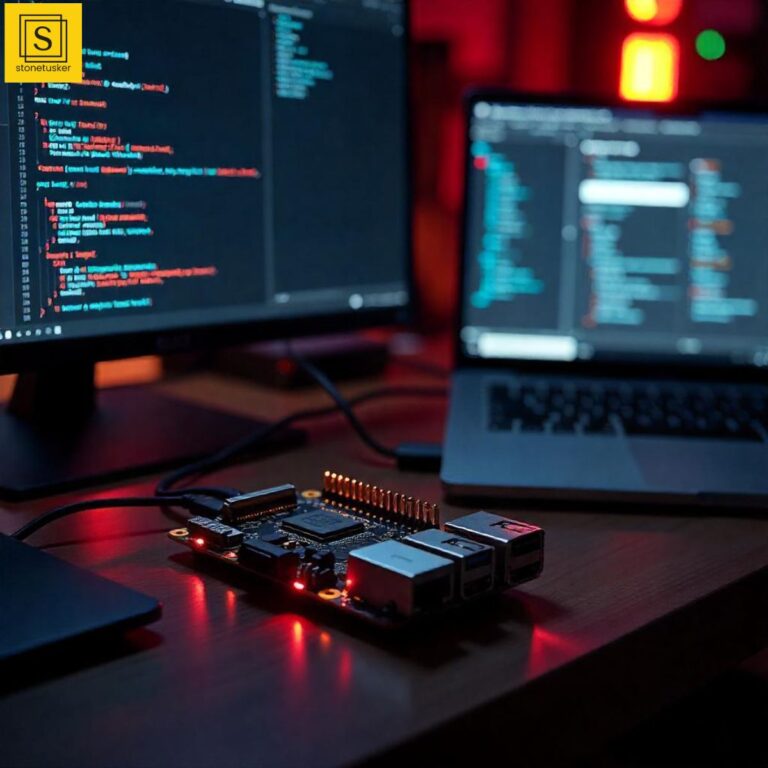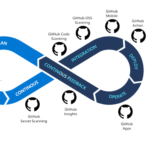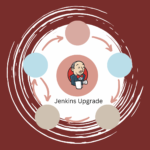Raspberry Pi, the credit-card-sized computer that revolutionized affordable computing, has become a cornerstone for learning, experimentation, and innovation worldwide. Whether you’re a beginner eager to explore programming or an advanced user building complex IoT or DevOps systems, Raspberry Pi offers a flexible platform to bring ideas to life. In this article, we’ll dive deep into the diverse uses of Raspberry Pi, practical examples for learners and students, and guide you through integrating Raspberry Pi projects with modern DevOps tools like GitHub Actions for CI/CD automation.
Understanding Raspberry Pi and Its Appeal
At its core, Raspberry Pi is a low-cost, single-board computer developed by the Raspberry Pi Foundation to promote computer science education. Since its launch, it has evolved through multiple versions, increasing in power and versatility while maintaining affordability.
- Key features: ARM-based processor, GPIO pins for hardware interfacing, HDMI output, USB ports, Wi-Fi, and Bluetooth connectivity.
- Why it’s popular: Low cost, small size, extensive community support, and a rich ecosystem of software and hardware add-ons.
Raspberry Pi Use Cases for Different User Levels
1. For Beginners and Learners
Raspberry Pi is an ideal starting point for anyone new to computing or programming. Here are some practical beginner-friendly uses:
- Learning Programming Languages: Python, Scratch, Java, and C/C++ are popular languages to practice on Raspberry Pi.
- Basic Electronics Projects: Using GPIO pins, learners can control LEDs, sensors, and motors, building hands-on understanding of hardware.
- Media Center: Turn your Pi into a media player with software like Kodi to stream videos and music.
- Retro Gaming Console: Emulate classic games using RetroPie, a popular Raspberry Pi project.
2. For Students and Educational Use
Students can leverage Raspberry Pi to deepen STEM knowledge and develop practical skills:
- Robotics and Automation: Build robots or automated systems integrating sensors and actuators.
- Science Experiments: Use Pi to collect data from environmental sensors (temperature, humidity, light) for experiments.
- Web Development: Host simple websites or web apps to learn backend and frontend development.
- Networking Projects: Set up a Pi as a local server, VPN, or network monitor to understand networking concepts.
3. For Advanced Users and Developers
Advanced users push Raspberry Pi’s capabilities into professional and hobbyist domains:
- IoT Gateways and Edge Computing: Connect sensors and devices, process data locally, and send summaries to cloud services.
- Home Automation Systems: Control lighting, climate, security cameras, and appliances using platforms like Home Assistant.
- AI and Machine Learning: Run lightweight ML models for image recognition or voice control using frameworks like TensorFlow Lite.
- Custom Network Appliances: Build firewalls, ad blockers (Pi-hole), or VPN servers.
- Media Servers and NAS: Use Raspberry Pi to serve media or files across your home network.
Leveraging Raspberry Pi for DevOps, Docker, Kubernetes & Infrastructure as Code (IaC)
Raspberry Pi isn’t just for hardware projects-it’s a powerful tool for mastering modern DevOps practices. Below, we explore how learners and professionals can use Pi to gain hands-on experience with industry-standard tools.
1. Docker: Containerization on a Microscale
- Learning Container Basics: Install Docker on Raspberry Pi OS and practice creating lightweight containers for applications like Nginx or Python scripts.
- Multi-Container Projects: Use
docker-composeto orchestrate microservices (e.g., a web app with a database). Example command:docker run -d --name my-nginx -p 80:80 nginx. - Real-World Example: Host a local Jenkins controller in Docker for CI/CD pipelines, as demonstrated in 24HOURSMEDIA’s DevOps cluster.
2. Kubernetes: Building Mini-Clusters
- K3s Lightweight Kubernetes: Deploy a single-node cluster with
curl -sfL https://get.k3s.io | sh -. Add nodes usingK3S_URLandK3S_TOKEN. - Hybrid Cloud Setup: Combine Raspberry Pi worker nodes with AWS EC2 control planes for cross-environment Kubernetes management, as detailed in Kubernetes the Hard Way on Raspberry Pi & Docker & EC2.
- Challenge: Resource limits require optimizing pods-use ARM-compatible images and limit CPU/memory requests.
3. Infrastructure as Code (IaC) with Ansible & Terraform
- Ansible Automation: Write playbooks to update multiple Pis simultaneously. Example:
- name: Update all Pis
hosts: pis
become: yes
tasks:
- name: Run apt update
apt:
update_cache: yes
Store inventory in hosts.ini and run with ansible-playbook -i hosts.ini playbook.yml.
- Terraform Practice: Use Raspberry Pi as a local backend to provision cloud resources (AWS/Azure) or manage Pi-based VMs via providers.
4. CI/CD Pipelines: Beyond GitHub Actions
- Jenkins on Pi: Set up a Jenkins controller and worker nodes for distributed builds. Use Docker-in-Docker (DinD) for containerized pipelines.
- BeetleboxCI: Automate hardware-in-the-loop testing with Raspberry Pi-specific CI/CD workflows (BeetleboxCI Tutorial).
5. Cloud DevOps Integration
- AWS LocalStack: Emulate AWS services (S3, SQS) on Raspberry Pi for cost-effective development/testing.
- SSM Agent: Manage Pi devices remotely via AWS Systems Manager for patches and automation.
Tools to Master
| Tool | Use Case | Pi Optimization |
|---|---|---|
| Docker | Container isolation | Use ARM-compatible images |
| K3s | Lightweight Kubernetes | Disable unused services |
| Ansible | Configuration management | Parallel task execution |
Case Study: DevOps Home Lab
A developer created a cost-effective lab with:
- 4 Raspberry Pis (2GB/4GB models)
- Jenkins for CI/CD
- LocalStack for AWS emulation
- VLAN-segmented networks for security
This setup allowed testing distributed systems and cloud-native tools without cloud costs. Read more about similar setups in Kubernetes the Hard Way on Raspberry Pi.
Step-by-Step Guide: Integrating Raspberry Pi Projects with GitHub Actions CI/CD
Automating your Raspberry Pi project deployment with GitHub Actions can save time and reduce errors. Here’s how you can set it up:
Step 1: Prepare Your Raspberry Pi
- Ensure your Raspberry Pi is connected to the internet and accessible via SSH.
- Set up SSH keys for passwordless access from your CI runner or GitHub Actions.
- Install necessary dependencies and software your project requires.
Step 2: Create Your GitHub Repository
- Push your Raspberry Pi project code to a GitHub repository.
- Include scripts to build, test, and deploy your project.
Step 3: Define GitHub Actions Workflow
Create a workflow YAML file in your repository under .github/workflows/deploy.yml:
name: Deploy to Raspberry Pi
on:
push:
branches:
- main
jobs:
deploy:
runs-on: ubuntu-latest
steps:
- name: Checkout code
uses: actions/checkout@v3
- name: Set up SSH
uses: webfactory/ssh-agent@v0.7.0
with:
ssh-private-key: ${{ secrets.SSH_PRIVATE_KEY }}
- name: Deploy code to Raspberry Pi
run: |
rsync -avz --delete ./ pi@YOUR_PI_IP:/home/pi/your-project-folder/
ssh pi@YOUR_PI_IP 'bash /home/pi/your-project-folder/deploy.sh'
Replace YOUR_PI_IP with your Raspberry Pi’s IP address and ensure your deployment script deploy.sh handles service restarts or other setup.
Step 4: Add SSH Key to GitHub Secrets
- Generate an SSH key pair on your local machine.
- Add the public key to the Raspberry Pi’s
~/.ssh/authorized_keys. - Add the private key to your GitHub repository secrets as
SSH_PRIVATE_KEY.
Step 5: Test Your Workflow
- Push changes to your main branch and observe the GitHub Actions workflow executing the deployment.
- Verify the Raspberry Pi has received the updates and your application runs correctly.
Latest Tools and Frameworks for Raspberry Pi Development
- Raspberry Pi OS: The official Debian-based operating system optimized for Pi.
- Docker: Containerize applications for easy deployment on Pi.
- K3s: Lightweight Kubernetes distribution optimized for edge devices.
- Ansible: Agentless automation for configuration management.
- Terraform: Infrastructure as Code tool to manage hybrid environments.
- GitHub Actions: CI/CD automation platform to streamline development workflows.
- LocalStack: Local AWS cloud stack emulator for testing cloud services.
- Home Assistant: Open-source home automation platform.
- TensorFlow Lite: Lightweight ML framework for edge AI on Pi.
- Node-RED: Flow-based programming for IoT projects.
Challenges and Solutions in Raspberry Pi Projects
- Performance Constraints: Raspberry Pi’s limited CPU and memory require optimized code and lightweight frameworks.
- Power Supply Issues: Use reliable power adapters to avoid instability.
- Network Security: Secure SSH access and update software regularly to prevent vulnerabilities.
- Storage Limitations: Use external drives or network storage for large data needs.
- Hardware Compatibility: Verify sensor and peripheral compatibility before purchase.
- ARM Compatibility: Build or use ARM-compatible container images and software.
- Resource Management: Limit container and pod resource usage in Kubernetes clusters.
Future Outlook and Emerging Trends
Raspberry Pi continues to evolve with new models featuring improved processing power and connectivity. Emerging trends include:
- AI at the Edge: More AI and ML applications running directly on Pi devices.
- Industrial IoT: Use of Raspberry Pi in manufacturing and smart infrastructure.
- 5G Connectivity: Integration with 5G modules for faster, low-latency applications.
- Edge DevOps: GitOps workflows and CI/CD pipelines managing fleets of Pi devices.
- Educational Expansion: Broader adoption in schools and universities worldwide.
Summary
Raspberry Pi is a versatile tool that adapts to the needs of beginners, students, and advanced users alike. Its affordability and flexibility empower learners to explore computing, while professionals harness its capabilities for sophisticated projects including DevOps, container orchestration, and infrastructure automation. By integrating Raspberry Pi with modern CI/CD tools like GitHub Actions, developers can streamline deployment and maintenance, enhancing productivity. Whether you’re automating your home, learning coding, or building IoT or DevOps solutions, Raspberry Pi offers endless possibilities to innovate and create.
Further Reading & References
- Raspberry Pi Foundation Education Resources
- GitHub Actions Documentation
- Home Assistant Official Site
- TensorFlow Lite for Edge AI
- Kubernetes The Hard Way on Raspberry Pi & Docker & EC2
- How I Leverage Raspberry Pi as a DevOps Engineer
- Upton, Eben and Halfacree, Gareth. Raspberry Pi User Guide, 4th Edition, Wiley, 2016.
Contact us today to get expert guidance and support tailored to your DevOps needs.



